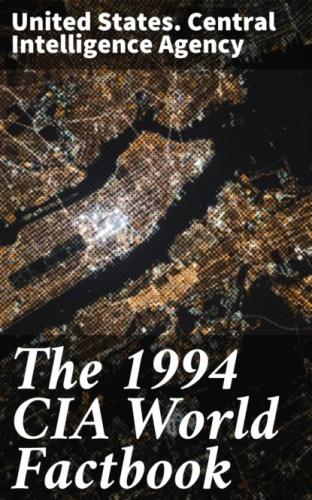Prime Minister Surat HUSEYNOV (since 30 June 1993)
cabinet:
Council of Ministers; appointed by the president and confirmed by the
Mejlas
Legislative branch:
unicameral
National Assembly (Milli Mejlis):
elections last held 30 September and 14 October 1990 for the Supreme
Soviet (next expected to be held NA 1994 for the National Assembly);
seats for Supreme Soviet - (360 total) Communists 280, Democratic Bloc
45 (grouping of opposition parties), other 15, vacant 20; note - on 19
May 1992 the Supreme Soviet was prorogued in favor of a Popular
Front-dominated National Council; seats - (50 total) Popular Front 25,
opposition elements 25
Judicial branch:
Supreme Court
Political parties and leaders:
Azerbaijan Popular Front (APF), Ebulfez ELCIBEY, chairman; Musavat
Party, Isa GAMBAR, chairman; National Independence Party, Etibar
MAMEDOV, chairman; Social Democratic Party (SDP), Araz ALIZADE,
chairman; Communist Party, Ramiz AKHMEDOV, chairman; People's Freedom
Party, Yunus OGUZ, chairman; Independent Social Democratic Party, Arif
YUNUSOV and Leila YUNOSOVA, cochairmen; New Azerbaijan Party, Heydar
ALIYEV, chairman; Boz Gurd Party, Iskander HAMIDOV, chairman;
Azerbaijan Democratic Party, Sardar MAMEDOV, chairman; Azerbaijan
Democratic Independence Party, Qabil HUSELNLI, chairman; Islamic Party
of Azerbaijan, Ali Akram, chairman
Other political or pressure groups:
self-proclaimed Armenian Nagorno-Karabakh Republic; Talysh
independence movement
Member of:
BSEC, CCC, CIS, CSCE, EBRD, ECE, ECO, ESCAP, IBRD, ICAO, IDB, ILO,
IMF, INTELSAT, INTERPOL, IOC, ITU, NACC, OIC, UN, UNCTAD, UNESCO, UPU,
WHO
Diplomatic representation in US:
chief of mission:
Ambassador Hafiz Mir Jalal Ogly PASHAYEV
chancery:
Suite 700, 927 15th Street NW, Washington, DC 20005
telephone:
(202) 842–0001
FAX:
(202) 842–0004
US diplomatic representation:
chief of mission:
Ambassador Richard KAZLAURICH
embassy:
Hotel Intourist, Baku
mailing address:
use embassy street address
telephone:
7–8922-92–63-06 through 09, extension 441, 442, 446, 447, 448, 450
FAX:
Telex 142110 AMEMB SU
Flag:
three equal horizontal bands of blue (top), red, and green; a crescent
and eight-pointed star in white are centered in red band
@Azerbaijan, Economy
Overview:
Azerbaijan is less developed industrially than either Armenia or
Georgia, the other Transcaucasian states. It resembles the Central
Asian states in its majority Muslim population, high structural
unemployment, and low standard of living. The economy's most prominent
products are oil, cotton, and gas. Production from the Caspian oil and
gas field has been in decline for several years. With foreign
assistance, the oil industry might generate the funds needed to spur
industrial development. However, civil unrest, marked by armed
conflict in the Nagorno-Karabakh region between Muslim Azeris and
Christian Armenians, makes foreign investors wary. Azerbaijan
accounted for 1.5% to 2% of the capital stock and output of the former
Soviet Union. Azerbaijan shares all the formidable problems of the
ex-Soviet republics in making the transition from a command to a
market economy, but its considerable energy resources brighten its
prospects somewhat. Old economic ties and structures have yet to be
replaced. A particularly galling constraint on economic revival is the
Nagorno-Karabakh conflict, said to consume 25% of Azerbaijan's
economic resources.
National product:
GDP - purchasing power equivalent - $15.5 billion (1993 estimate from
the UN International Comparison Program, as extended to 1991 and
published in the World Bank's World Development Report 1993; and as
extrapolated to 1993 using official Azerbaijani statistics, which are
very uncertain because of major economic changes since 1990)
National product real growth rate:
−13.3% (1993 est.)
National product per capita:
$2,040 (1993 est.)
Inflation rate (consumer prices):
20% per month (average 1993); above 50% per month (February 1994)
Unemployment rate:
0.7% includes officially registered unemployed; also large numbers of
underemployed workers (December 1993)
Budget:
revenues:
$NA
expenditures:
$NA, including capital expenditures of $NA
Exports:
$355 million to outside the FSU countries (f.o.b., 1993)
commodities:
oil and gas, chemicals, oilfield equipment, textiles, cotton (1991)
partners:
mostly CIS and European countries
Imports:
$240 million from outside the FSU countries (c.i.f., 1993)
commodities:
machinery and parts, consumer durables, foodstuffs, textiles (1991)
partners:
European countries
External debt:
$NA
Industrial production:
growth rate −7% (1993)
Electricity:
capacity:
6,025,000 kW
production:
22,300 kWh
consumption per capita:
2,990 kWh (1992)
Industries:
